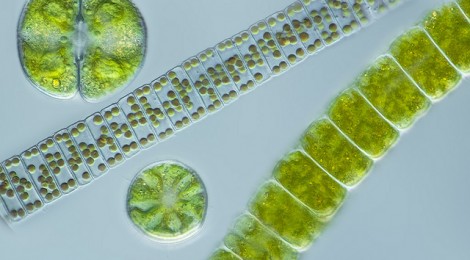
Where Have All the Plankton Gone
Ocean phytoplankon are disappearing at an alarming rate. A far more rapid collapse than any ecosystem on Earth.
The amount of phytoplankton in the top layers of the oceans has declined by at least 50 percent over the last century, according to a study just published in the journal Nature. Phytoplankton account for about half of all photosynthetic activity on Earth and are essential for life in the oceans.
According to marine biologist Daniel Boyce of Dalhousie University in Nova Scotia, Canada, the lead author of the study, “They produce energy through the process of photosynthesis. So in the presence of sunlight, they convert inorganic energy to organic energy. And by doing this, they form the base of the entire marine ecosystem. So they are the food for everything — from little zooplankton up to the big whales.”
According to the abstract of the article, “Analyses of satellite-derived phytoplankton concentration (available since 1979) have suggested decadal-scale fluctuations linked to climate forcing, but the length of this record is insufficient to resolve longer-term trends. Here we combine available ocean transparency measurements and in situ chlorophyll observations to estimate the time dependence of phytoplankton biomass at local, regional and global scales since 1899. We observe declines in eight out of ten ocean regions, and estimate a global rate of decline of ~1% of the global median per year. Our analyses further reveal interannual to decadal phytoplankton fluctuations superimposed on long-term trends. These fluctuations are strongly correlated with basin-scale climate indices, whereas long-term declining trends are related to increasing sea surface temperatures. We conclude that global phytoplankton concentration has declined over the past century; this decline will need to be considered in future studies of marine ecosystems, geochemical cycling, ocean circulation and fisheries.”
“Carl-Gustaf Lundin, head of the marine program at the International Union for the Conservation of Nature (IUCN), suggested there could be other factors involved – notably the huge expansion in open-ocean fishing that has taken place over the century: ‘Logically you would expect that as fishing has gone up, the amount of zooplankton would have risen – and that should have led to a decline in phytoplankton,’ he told BBC News. ‘So there’s something about fishing that hasn’t been factored into this analysis.’ The method of dividing oceans into grids that the Dalhousie researchers used, he said, did not permit scrutiny of areas where this might be particularly important, such as the upwelling in the Eastern Pacific that supports the Peruvian anchovy fishery – the biggest fishery on the planet.”
“If the trend is real, it could also act to accelerate warming, the team noted. Photosynthesis by phytoplankton removes carbon dioxide from the air and produces oxygen. In several parts of the world, notably the Southern Ocean, scientists have already noted that the waters appear to be absorbing less CO2 – although this is principally thought to be because of changes to wind patterns – and leaving more CO2 in the air should logically lead to greater warming.
‘Phytoplankton… produce half of the oxygen we breathe, draw down surface CO2, and ultimately support all of our fisheries,’ said Boris Worm, another member of the Dalhousie team: ‘An ocean with less phytoplankton will function differently.’ The question is: how differently? If the planet continues to warm in line with projections of computer models of climate, the overall decline in phytoplankton might be expected to continue. But, said, Daniel Boyce, that was not certain” .








